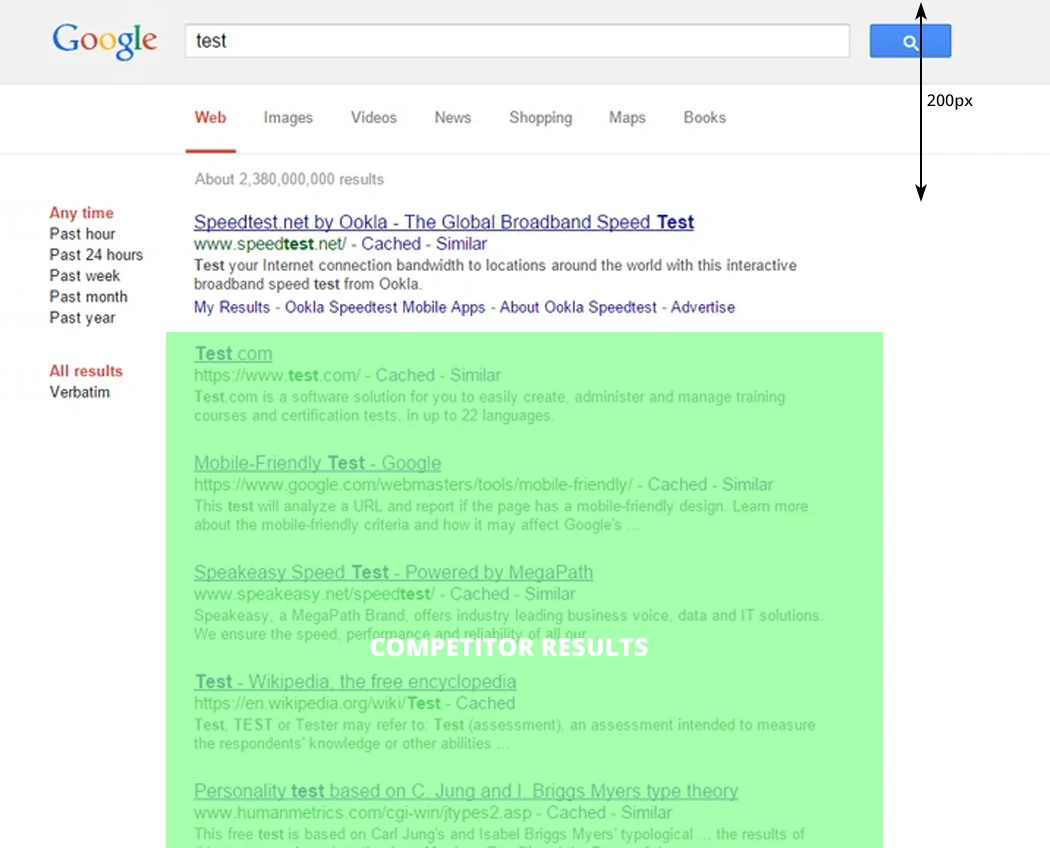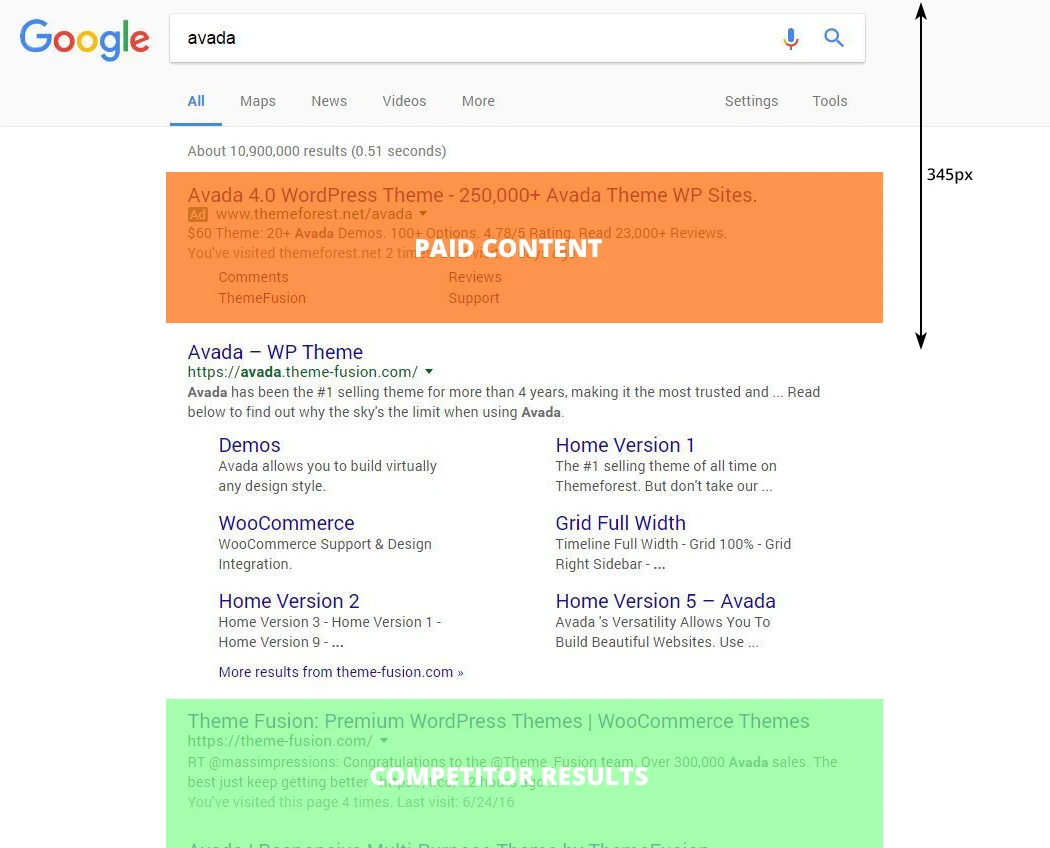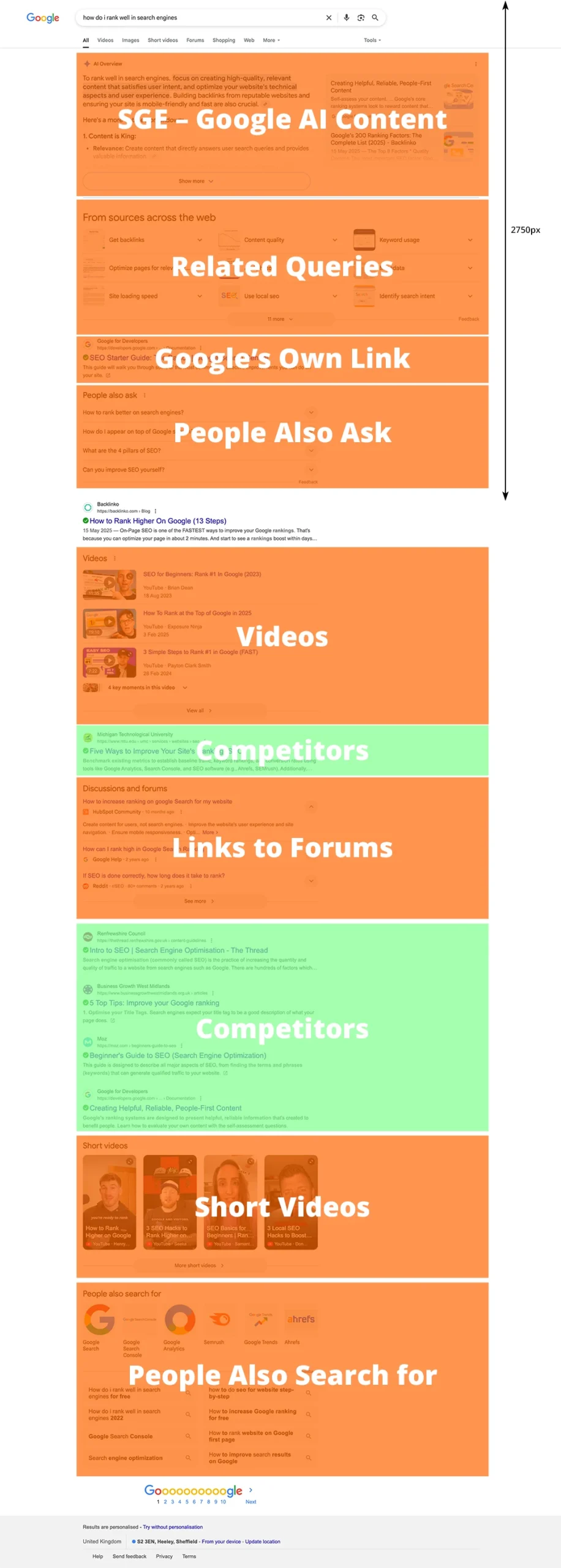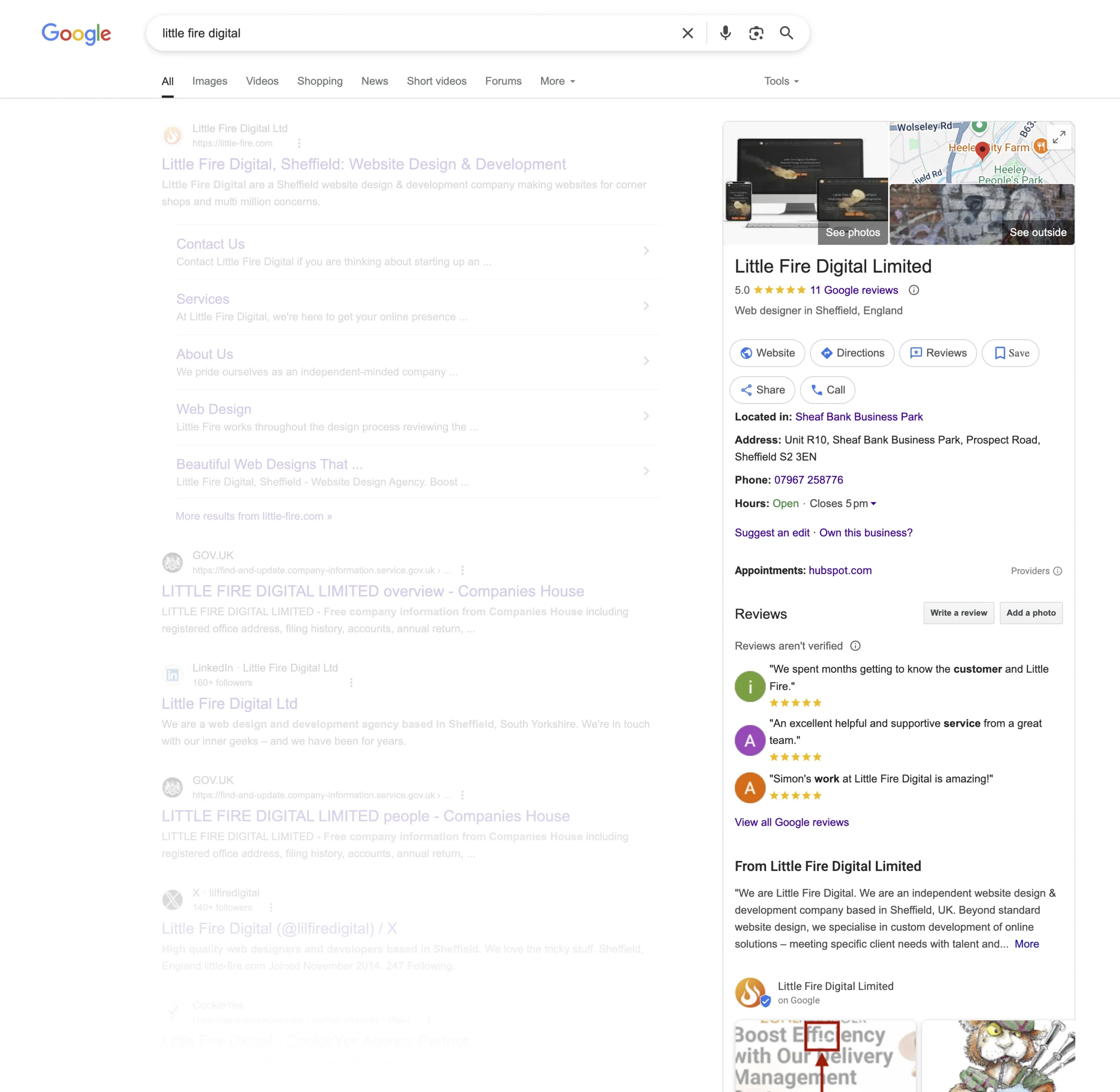
You’re about to lose a lot of traffic. AI is rewriting the rules of website visibility and being number 1 in Google just isn’t what it used to be. You need to act now.
Remember the good old days, you’d wade past the sponsored links find the organic search results and there you’d be –website visibility was easy to understand.
But the ground beneath our feet is shifting. AI-powered search and conversational models aren’t an evolution; they’re a seismic shift that poses an urgent threat to traditional website traffic models. For businesses, the warning is clear: your website URLs are set to become significantly less visible and fewer websites will ultimately receive direct traffic.
This isn‘t a future possibility; it‘s happening now. You need to take action.
Table of Contents
What is Website Visibility?
Website visibility – it’s as simple as it sounds, how frequently and where does your business appear on the internet and how many people can see it?
It used to be simple. Everyone went to the same place (Google) and everyone found the same things in the same place.
People could be visible elsewhere – on YouTube for example – but by far the largest proportion of search traffic has always been through Google.
While it could be difficult to achieve, if you could get your site to the top of Google every one would see it – everyone knew where to find it.
Gaining website visibility used to be easy to understand and easy to recognise.
But the world is changing and changing fast. The stats for 2025 are stark :
Not only is Google’s share of the search market declining, Google itself is making the top organic search results ever harder to find.
A high ranking used to mean clicks, and clicks meant traffic, leads and revenue. But AI is fundamentally disrupting this equation. Platforms like Google’s AI Overviews (powered by Gemini), Microsoft Copilot and independent LLMs like ChatGPT are designed to provide comprehensive answers directly on the search results page or within conversational interfaces.
The Decline of “Blue Link” Clicks
For decades, the holy grail of SEO gaining the top spot in Google’s “blue links”.
Remember This – Google Search Circa 1012?

Coming top in Google meant just that. A single, easy-to-read link close to the top of the page. Visibility couldn’t be more straightforward – if you were using the web back then, you’d know exactly what you were looking at.
If you’d set your website title and description correctly, there it would be a mere 200px from the top of the page. Your content published to everyone.
Ten links on page 1. Competitors came close behind, if you were in those top few, you’d be seen.
Or This? … Google Search 2016
By 2012, Google has got a bit cleverer. Adverts which used to be to one side in coloured boxes are now posted in, more or less, the same format above the rest of the results.
Being number 1 in Google now meant you appeared at about 345 pixels from the top of the page – still comfortably visible on a laptop. The exact height may vary, but it was always there and you always knew where that valued first link would be.
This new difficulty in discerning between sponsored and ranked results lead to the idea of organic links. Because they achieved this top spot without paying for it, users valued organic links to sites over the sponsored content.
Number 1 in the organic links still represented a universally understood format in a predicable location. On top of that, Google would reward you by breaking your search results down – your users could see your site at some depth directly from the search results.

Roll on to June 2025
The world’s most popular SERP (Search Engine Results Page) has now changed beyond all recognition. This article is being written on a very large studio monitor 5120px wide by 2880px – on the example below, the first “Blue Link” appears at the very bottom of the screen. Everything else has been chosen or invented by Google.
There used to be 10 organic links per page – on the sample below, there are 6.
But this page is typical, it is not consistent. Only 47% of Google search results pages generated content (as of 2024)3, not all results feature People Also Ask, Related Queries or People also search for.
It is undeniable that the modern SERP is much, much harder to read. The format is not consistent and the organic results are lost in the enormous jumble of inconsistent content.
At Little Fire, we would argue this is driving Google’s declining share of the search market4.

Given that those blue links are so much harder to find – their value as engines of website visibility has massively declined.
Search is Changing
This has been brewing for some time. Google has focused on a more conversational search style for some years – so-called long-tail searches. Paired with AI overviews, the Google search experience often resembles a dedicated LLM chatbot. The answer is generated at the top of the screen, the user leaves with the answer they want.
This phenomenon, dubbed “zero-click search,” is rapidly accelerating. A significant percentage of searches now conclude without the user ever clicking through to an external website.
Given that the Google SERP is now such a mess, why wouldn’t you go elsewhere.
Heck! A significant proportion of people aren’t even using Google (or any traditional search engine) at all, any more – 67% of US consumers believe AI will replace search engines in 3 years5.
The Appeal of the Almost Human
Quite apart from the lack of visual clutter, people like AI based search.
Conversation is how we like to communicate – search terms are an unnatural construct. It’s no wonder we’ve adopted AI search so rapidly.
AI search is more natural, instead of searching for “F11 Fault Miele” a search like “how do I unblock my dishwasher (it’s a miele)” feels more descriptive.
AI chat is ‘stateful’, it tends to remember from a few queries ago – you don’t have to tell it that your dishwasher is a Miele again. Follow up questions don’t need reframing as search terms: “and can I buy that near here?”.
Rethinking Website Visibility 1
The blue link is dead – so small a part of search content that it cannot be the main focus of any SEO strategy. Rather than bemoaning their demise, it’s time to look elsewhere.
Attribution – Here’s One We Prepared Earlier
Never forget, Google needs content. With the added risk of AI eating itself (Google generating AI copy from indexed content generated by AI) it needs real human content more.
Google is quite generous when it comes to attribution.
One new holy grail for Website Visibility here is a feature in the AI overview header – here’s one we prepared earlier:

In some ways it’s better than the top organic search result (we’ve bagged that one too and the second result above is our client’s article published in a trade journal – go us), our client Zone Manager get their words and photo right at the top of the page in a 2012 style.
But the same search gets no such panel on a touch-screen device – it’s hard to argue it’s quite as good – that’s 50%+ of users who wont see that attribution.
If you really need to know your stuff, the small link against the text in the AI overview reveals a similar panel – this works on mobile too. But it requires you to want to know more – most users will have found what they want and left.
If you’re in those links, even though you helped build that overview, your website visibility is going to be toast.

Attribution and Other AI Models
Given that all of the major LLM engines are aiming for a conversational style, attribution is secondary to the delivery itself. Who, in the pub, would preface every statement with: “According to Wikipedia …”?
Attribution is evolving:
Perplexity AI is perhaps the most transparent of the major platforms, offering prominently displayed source URLs alongside its answers. However, Perplexity’s user base, while growing, is still smaller than Google or Microsoft’s offerings.
Gemini is the same engine as Google’s AI overviews but links to the sources are found in a link at the foot of the page. It’s not great, but it is there.
Microsoft Copilot: Copilot (formerly Bing Chat) generally provides more visible footnotes or links to its sources, offering a clearer path back to the original content. However, the user still needs the inclination to click.
ChatGPT does similar but according to Wikipedia6:
Over half of ChatGPT’s citations are fabricated or inaccurate; only a small fraction (around 7%) are correct and matched
It’s going to be a while before LLM chat engines offer you serious website visibility but gaining attribution is going to be ever more essential.
Content is Still King … but Adapt or Be Left Behind
This isn‘t a time for a “wait and see” approach. The shift is happening now. While attribution is not as effective as a direct link it might be as good as you’re going to get.
As with natural conversation before search, if you want to be noticed, you have to be interesting.
Good, in-depth content will get you noticed. Long-tail, authoritative content will gain you more references than a narrowly, constructed keyword-heavy page. You’re going to need a lot of attribution.
Get Writing.
Structuring Content for Website Visibility in the Age of AI
Prioritise “Citation-Worthy” Content Over Keywords
- Unrivalled E-E-A-T: Google’s emphasis on Experience, Expertise, Authoritativeness and Trustworthiness is paramount. You need to be the undisputed authority in your niche. Showcase your credentials, publish original research and provide unique insights that AI can’t simply fabricate.
- The “Why” and “How” over the “What”: AI excels at summarising facts. Focus your content on in-depth analysis, step-by-step guides, case studies, and unique perspectives that offer true value beyond a quick answer.
- Proprietary Data and Research: If you have unique data, conduct your own studies, or gather exclusive insights, publish them! This becomes a highly valuable and difficult-to-replicate asset that AI models will favour for citation.
Master “Answer Engine Optimisation” (AEO)
AEO doesn’t replace SEO but it profiles content and site structure so as to make the site legible to AI engines as well as traditional indexing algorithms,
- Direct, Concise Answers at the Top: Format your content to provide immediate, unambiguous answers to potential user queries. This is what AI craves for summarisation.
- Robust FAQ and Q&A Sections: Make it incredibly easy for AI to extract structured answers. These sections are prime targets for AI inclusion.
- Flawless Schema Markup: Implement
FAQPage,HowTo,Article, and other relevant schema meticulously. This helps AI understand the semantic meaning and structure of your content, increasing the likelihood of citation. - Conversational Tone & Long-Tail Focus: Write as if you’re answering a direct question. Optimise for conversational, long-tail queries that users are likely to pose to an AI assistant.
Technical AI Accessibility
- Server-Side Rendering (SSR): Many AI crawlers (unlike Google’s) don’t fully execute JavaScript. Ensure your critical content is rendered on the server-side and visible in the raw HTML. If your content relies heavily on client-side rendering, AI might miss it entirely.
- Clean and Semantic HTML: Simple, well-structured code is easier for AI to parse. Avoid overly complex or messy HTML.
- Lightning-Fast Load Times: Speed remains crucial. AI values efficiency and slow-loading pages will be penalised.
- Aggressive IndexNow Implementation (for Bing/Copilot/ChatGPT): Don’t wait for crawlers. Proactively notify Bing (and thus Copilot and ChatGPT) whenever your content is updated or published. This ensures your latest, most relevant content is available for AI consumption.
Rethinking Website Visibility 2
The challenges presented by AI and Google go beyond the simple presence of one link within a list of ten. Ultimately website visibility is about driving users to your site and creating conversions – whilst convenient, that Google ranking was always a facile indicator.
Google, Google, Google
Google still represents the lion’s share of all search traffic. Rather than imposing barriers to your presence, it makes sense to look at the modern SERP page in terms of opportunities to feature:
- Rather that complaining about the AI Overview – work towards getting yourself cited
- Make your content in-depth – answer those alternative queries in your content rather than adhering rigidly to your keywords.
- People also Ask – they really do. Those are real questions asked of Google – there is attribution associated with every answer – make Google’s job easy, answer those questions and it could be you
- Videos – video has been growing in popularity for years – why wouldn’t Google want to feature it. It‘s just content. Make it good, structure your data and it’s another opportunity to feature. ChatGPT will reference videos if it believes it answers your query exactly – no attribution required.
- People also Search For – again, Google is telling you where the traffic is – give Google what Google wants.
Beyond Search
It’s important but SEO is never a finished business strategy in itself – notice Google is explicitly citing message boards, forums and discussions.
It‘s time to diversify your sources of traffic:
- Community Engagement: Actively participate in forums, Reddit, LinkedIn groups and other online communities where your target audience congregates. If you can, become a visible expert in these spaces – build loyalty.
- Direct Traffic & Brand Building: Double down on building a strong brand identity that encourages direct visits. Cultivate loyal audiences through email marketing, strong social media presence and offline initiatives.
- Strategic Partnerships: Collaborate with other businesses or influencers in your industry to expand your reach beyond search. Trade journals and networks will be more important than ever.
- Paid Media: Re-evaluate your paid media strategies. With fewer clicks, focus shifts to impression share, brand visibility, and driving more qualified, higher-intent traffic. Consider how ads can complement AI overviews rather than compete directly.
Go Local
Local SEO is an oft-underrated aspect of broader SEO and has some specific advantages. Because of the energy and resources required, AI Overviews tend to be generated for broad, informational queries – local queries are by their very nature, specific. If a local market serves you, Local SEO may be your key to retaining visibility and traffic.
People still overwhelmingly prefer Google and other traditional search engines for local searches – the effects of ChatGPT and its ilk are felt far less strongly in the local sphere.
Local Results are More Prominent
For local, service-based, or transactional searches (e.g., “electrician near me”, “best coffee shop in [town]”, “dentist in [area]”), Google still heavily features: the local map pack, Google Business Profiles and location-based organic listings.
These are less susceptible to AI summaries pushing down websites. Indeed Google often presents a small version of the map pack when a query is recognisably local.

Google Business Profile (GBP) is Highly Visible
Your Google Business Profile appears directly on the search results page, often before standard website links.

Optimising your GBP profile allows you to control:
- Business information (opening hours, address, contact details)
- Reviews and ratings
- Photos and media
- Posts and announcements
The GBP profile is your best opportunity to publish your content to Google. Even with AI summaries, Google continues to prominently surface the local pack and business cards, especially on mobile devices.
Local Customers are Motivated, High Intent Users
When your friend asks: “Is there a good indian takeaway around here?” you’re much more likely to end up with yummy turmeric stains than “what makes a good curry?”.
People who are looking locally are actively searching; they on their way to becoming someone’s customer – why not you? What‘s more local is a high-trust, high-conversion environment. Most businesses will want local website visibility more than they want to be well known on another continent.
Re-evaluate Your KPIs
This process is about maintaining and building website traffic and conversions. In this evolving landscape, measuring website visibility will be easy (am I getting lots of visits and are they converting) but understanding it will be far, far harder.
Tracking Mentions
Software for tracking AI citations, brand mentions and the like are in their infancy but are evolving. It can be done but required While we’re waiting, focus on the parts of the process you can control – usability, the customer experience, speed and content.
Attribution Modelling
Last touch attribution (LTA) is much less helpful than it used to be – a link in an AI response is a link from a page which may not exist yet.
Multi-touch attribution (MTA) is a marketing analytics method that assigns credit to multiple touchpoints in a customer’s journey – such as ads, emails, and website visits – helping businesses understand which channels and interactions contribute most to conversions.
Multi-touch attribution is more challenging to implement and understand than Last-Touch Attribution (LTA), but Google Analytics and Adobe both offer affordable solutions. By its very nature, LTA is hard to track accurately (did they see an advert on the site of a bus?), so only really becomes meaningful with larger datasets.
In Conclusion
The era of hard-won “blue link” traffic is drawing to a close. Businesses who fail to adapt their content, technical infrastructure and marketing strategies to the demands of AI will find their online visibility rapidly diminishing. Without meaning to harm you, AI can and will eat your online traffic for breakfast.
Everyone is at risk of losing traffic. Beyond the challenge of maintaining visits, the focus needs to be on improving the quality of those visits – positive citations, trusted referrals – and the trust associated
This is an urgent call to action to not only survive but thrive in the new, AI-dominated digital landscape. Diversify your sources and become a site that AI trusts and you will secure your future traffic.
If the above looks complicated, it is. AI is evolving and this is the start of a journey, not a destination. Don’t get left behind, get Little FIre along for the ride.
